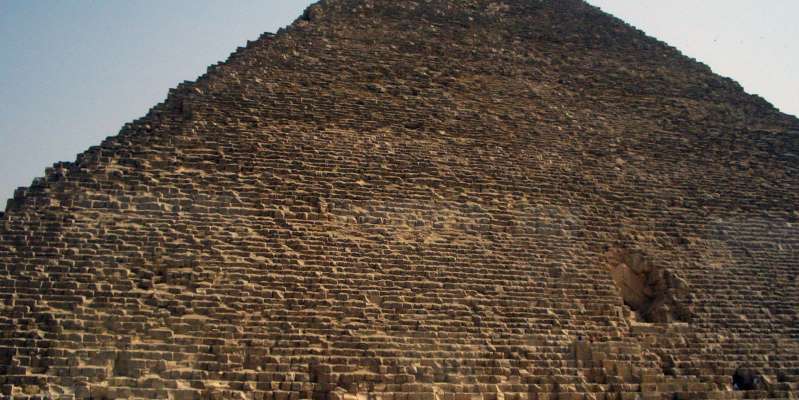
Symbols from an ancient Egyptian temple named the world's first alphabet
The characters found in an ancient Egyptian temple on the Sinai Peninsula may be the world's oldest alphabet. The inventors of this alphabet were not representatives of the upper class, but illiterate miners, according to the theory of professor of Egyptology at the Hebrew University of Jerusalem Orly Goldwasser.
The age of the inscriptions is about four thousand years. Flinders and Hilda Petrie discovered them back in 1905. The couple explored a site on the Serabit el-Khadim plateau in the southwest of the Sinai Peninsula, where a turquoise mine, a workers' camp and the Hathor temple were located, Egypt and the Levant reported .
Turquoise was highly prized in Ancient Egypt. It symbolized rebirth and was often used to decorate tombs. The goddess Hathor was the patroness of the labor of miners who extract this mineral.
Several giant vertical slabs have survived along the road leading to the temple. On them were hieroglyphs designated the names and positions of workers. From there, historians learned that people from other lands, including Canaan, worked at the mine.
There were other, very strange and incomprehensible symbols next to the hieroglyphs. They were carved both on the walls of the mines and on some statues. Ten years later, one of the inscriptions was deciphered. It read “beloved Baalat” (Canaanite goddess). Scientists have made sure that these symbols are not at all like hieroglyphs.
According to Goldwasser's theory, Canaanite miners saw how the locals wrote messages to the gods using certain signs, and decided to follow their example. But since they did not know how to read hieroglyphs, they created their own writing system, borrowing some elements from the Egyptians.
The workers viewed the hieroglyphs as pictures. They chose images that were relevant to their life, but used them in a completely different way than the Egyptians.
Professor Goldwasser described the process of moving from hieroglyphs to letters: “Call the picture by name, take only the first sound and get the picture out of your head.” The hieroglyph for the bull (“Aleph”) became the approximate basis for the letter “A”, the hieroglyph for the house (“bet”) became “B” and so on.
The “Proto-Sinai” writing system later developed into the South Arabian and Phoenician, from which, in turn, the Greek and Latin alphabets originated.
According to the former president of the French Society of Egyptologists, Pierre Tallet, the theory that the alphabet originates from illiterate miners and not from the educated elite is quite logical: “It is clear that the one who left these inscriptions on Sinai did not know the hieroglyphs.”
Earlier it was reported that the world's oldest pointer was found in Sudan. It was located in a dry river.

